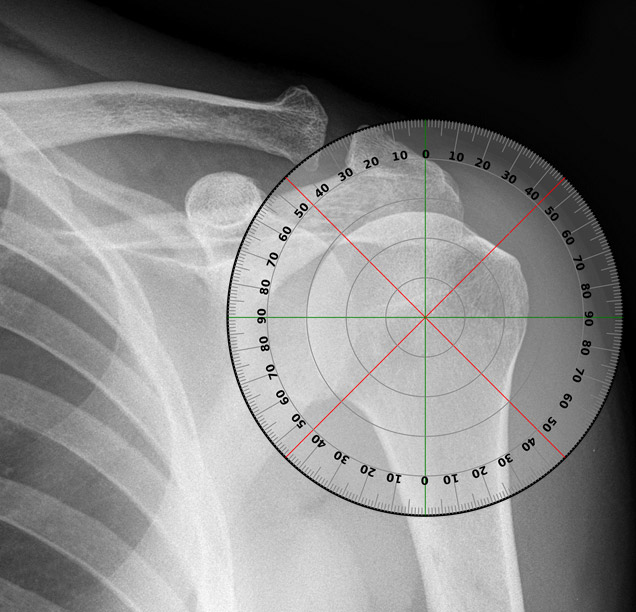Background
We have often observed that a lateral or high-riding greater tuberosity was associated more with rotator cuff lesions, and have therefore developed an angle that could take into account both first parameters that we have called the humeral head to greater tuberosity angle (HGTA).
Several studies have demonstrated a link between scapula morphology (acromion shape and lateralization, glenoid version) and rotator cuff tears. However, influence of humeral anatomy on such lesions has as yet been poorly investigated. Our hypothesis is that a lateral or high-riding greater tuberosity position relative to the humeral head significantly predisposes to impingement and rotator cuff tear. This position can be determined by a single angle calculated on a plain AP radiograph and has been named the humeral head to greater tuberosity angle (HGTA); a higher angle is associated with a higher occurrence of rotator cuff tear. This angle may be a simple and valuable tool enabling to screen patients and predict those prone to a rotator cuff tear. It could help refine the diagnostic presumption and guide adequate choice of complementary workup and treatment. Moreover, demonstrating this correlation may underline the importance of performing tuberoplasty (correcting the tuberosity protuberance) during surgery in order to correct the angle. Finally, measuring HGTA on postoperative radiographs could also offer a quality control for surgeons, not only after rotator cuff surgery, but also in other situations such as quality of greater tuberosity reduction in trauma surgery.



